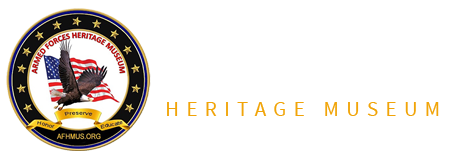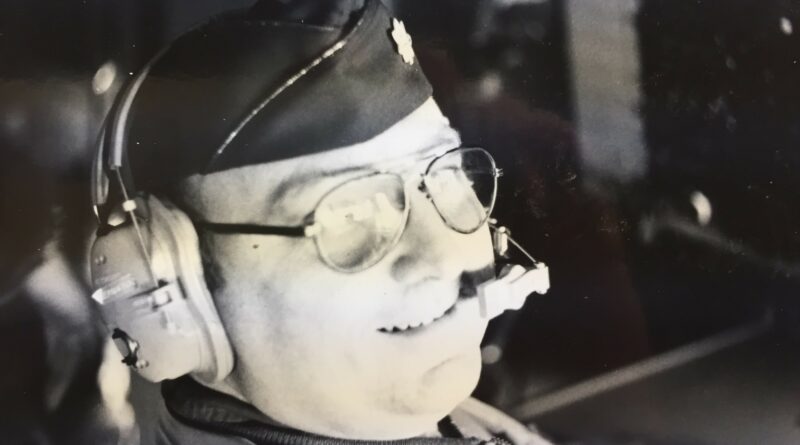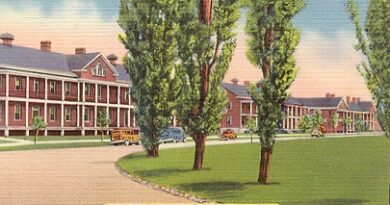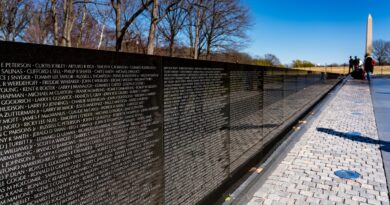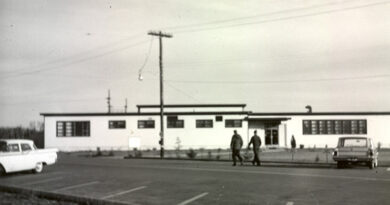The Flying Peter
A memoir by Colonel Bob von Bargen, USAF Retired
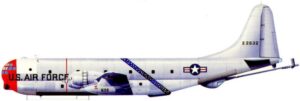 I reported to Pease AFB in New Hampshire in January 1960. As I sat in the Squadron Navigator’s office waiting for my flight training, I observed the comings and goings of squadron aircrew members. There was one young Lieutenant who delighted in tormenting the Squadron Navigator, Captain Buddy Harp. He was about to leave the Air Force for civilian life and consequently was not concerned about the pressures of military life in the Strategic Air Command. When he left the office after an encounter with Captain Harp, he would have a big smile on his face … and the normally composed Buddy Harp would be trembling in frustration. The Lieutenant’s name was Peter J. Hermann. I checked out in the KC-97G just as Lieutenant Hermann left active duty… you could say that I was his replacement.
I reported to Pease AFB in New Hampshire in January 1960. As I sat in the Squadron Navigator’s office waiting for my flight training, I observed the comings and goings of squadron aircrew members. There was one young Lieutenant who delighted in tormenting the Squadron Navigator, Captain Buddy Harp. He was about to leave the Air Force for civilian life and consequently was not concerned about the pressures of military life in the Strategic Air Command. When he left the office after an encounter with Captain Harp, he would have a big smile on his face … and the normally composed Buddy Harp would be trembling in frustration. The Lieutenant’s name was Peter J. Hermann. I checked out in the KC-97G just as Lieutenant Hermann left active duty… you could say that I was his replacement.
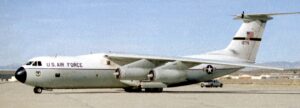 I encountered Peter Hermann again when I was assigned to the 335th Military Airlift Squadron at McGuire Air Force Base. I had joined this Associate[1] unit in 1969. Peter arrived in 1970. When he checked out in the C-141 aircraft I was privileged to be one of his instructors. Peter had returned to his home on Long Island and became a High School teacher, and then a guidance counselor. He retained his refreshing approach to military life. Peter was a delightful addition to the squadron. For the next twelve years Peter would leave his mark at McGuire AFB.
I encountered Peter Hermann again when I was assigned to the 335th Military Airlift Squadron at McGuire Air Force Base. I had joined this Associate[1] unit in 1969. Peter arrived in 1970. When he checked out in the C-141 aircraft I was privileged to be one of his instructors. Peter had returned to his home on Long Island and became a High School teacher, and then a guidance counselor. He retained his refreshing approach to military life. Peter was a delightful addition to the squadron. For the next twelve years Peter would leave his mark at McGuire AFB.
There are many stories about Colonel Peter Hermann. Here are a few!
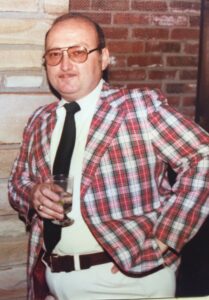 1- How Peter Herman became the “tallest” Navigator in the Air Force:
1- How Peter Herman became the “tallest” Navigator in the Air Force:
Peter was always a step away from the Air Force’s “Fat Man’s Club.” The Air Force had strict weight standards. Personnel who exceeded the height and weight guidelines were required to attend mandatory sessions of education and exercise. Aircrew members who did not lose weight were released from the service. Peter approached each annual physical with trepidation. I was with him during one annual physical exam. The clinic separated people taking their annual physical into small groups for lab work, eye exams, hearing tests, and height/weight measurements. The process concluded with a Flight Surgeon’s physical evaluation.
Peter tensed in anticipation as we approached the height and weight evaluation. There was one medical technician, a sergeant, taking height measurements at a scale with a metal ruler attached. He called out the height and weight of each examinee to a second technician, a teenager who had just returned from basic training. The young airman sat at a desk adjacent to the scale and recorded the announced readings. He then checked the weight against height on a grid chart to determine if they were within Air Force standards. He then recorded a “pass” or “fail” in the individual’s medical jacket.
Peter stepped on the scale. The Sergeant called out his weight: “Two hundred and twenty.” Then he placed the long metal ruler over Peter’s head and called out “Six – Nine!” (He meant Sixty-Nine inches – or five foot nine!) The kid recording the readings entered a height and weight chart with Peter’s weight of 220 pounds and then went to the column for “SIX FOOT- NINE.” He concluded that Peter’s weight was within guidelines. He marked “PASS” on the medical form and Peter escaped the “Fat Man’s Club” for another year.
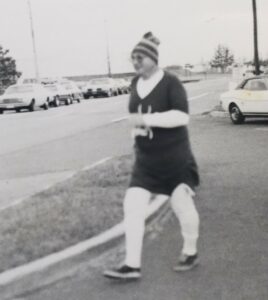 2- The Arrest (Circa 1980)
2- The Arrest (Circa 1980)
It was the annual 335th MAS “turkey trot”; a run conducted every fall as a part of the Air Force physical fitness program. Peter had just been promoted to Colonel and would be leaving McGuire AFB for a new assignment with FEMA (Federal Emergency Management Agency). He was wearing a bright red night shirt over shining long johns when he reported to start his run. A glowing red tasseled cap sat askew on his head. Always a pound away from the “Air Force Fat Boys Club”, he was quite a sight in this glowing aerobic costume. I spoke with him briefly before he jogged away from the operations building and onto Arnold Boulevard.
I quickly climbed the stairs to the Operations office on the second floor. There were several people in the office talking to the Operations and Training officer. As we looked out of the large picture window, I pointed to the flaming red mass moving slowly along the asphalt. We all chucked at the sight. As Peter turned the corner and headed north on Vandenburg Avenue, I decided to make Peter’s last Turkey Trot at McGuire AFB memorable.
I picked up the phone and called the Base Air Police duty desk. I hastily told the Desk Sergeant that a strange man wearing a bright red suit, had entered our building, and departed. I related that he was now running northbound on Vandenberg Avenue. I hung up before the Sergeant could ask any questions.
We watch from our window as an Air Police sedan appeared and slowing came up behind Peter as he lumbered along the roadway. The “bubble gum” light on the roof of the vehicle flashed as the AP hailed him to a halt. Peter, totally puzzled by these events, tried to explain what he was doing. “I’m Colonel Hermann”, he declares to no avail. “Do you have any identification?” demanded the young Airman. “Of course, I don’t not have any identification … I’m out on the Turkey Trot,” Peter protested. The officious young Air Policeman would not buy any of this explanation. Peter was placed in the back seat of the military police sedan, and they drove toward the operations building.
One of the persons watching from the office window was the Squadron First Sergeant, Chief Master Sergeant Ed Rudden. He quickly hustled down to his office, which was located adjacent to the front door of the building. Here he would do his best to continue the ruse.
As the Air policeman brought Peter into the chief’s office, the chief feigned work on a document on his desk. The Air Policeman introduces himself and asked the First Sergeant if he knew the apprehended man. Peter looked at the Chief and said: “Ed, tell this man that I am Colonel Hermann!”
The chief stared at the two of them, and with the practiced expression of a vaudeville straight man, said: “I never saw him before in my life!” Peter stood flatfooted, in total disbelief. As the Air Policeman started to reach for Peter to haul him away, the chief could no longer maintain his composure … he started to laugh. The Policeman immediately realized the joke, smiled and then joined in the laughter. The much relieved newly minted Colonel sighed with relief. The observers from upstairs augmented the ensemble in the Chief’s office and pictures were taken to preserve the prank.
3- The Flight Surgeon’s car
It was a cold winter afternoon when the Aeromedical flight returned to McGuire AFB. The crew had spent the weekend flying a MAC707 mission to Navy Keflavik Air Base in Iceland and then on to Frankfort‘s Rhein-Main Air Base in Germany. After a 15 hour crew rest they conducted a live aero medical flight from Frankfort to Andrews AFB in Maryland where the patients were taken to either Walter Reed or Bethesda Naval Hospital.
When they went to the ice covered parking lot the Flight Surgeon assigned to the mission was unable to get his frozen car started. The roads had been salted; the region was recovering from an ice storm that morning. Peter, Chris Cronin, and George Kingston tried in vain to get the old car started. It would not cooperate.
It was decided that the best way to get the car to start was to get it thawed out. Peter devised a plan where the Flight Surgeon’s car would be pushed to George Kingston’s house in Mount Holly and put inside his warm garage. This was ten miles away.
Peter got into his car and started to push the old car with the Colonel Flight Surgeon steering, and 2/Lt Chris Cronin riding shotgun. Anyone who has ever driven with Peter knows that even under the best of conditions … it can be an adventure. This journey was to set new standards for fear. As Peter became more comfortable with the pushing routine he gradually increased speed. They were soon roaring along this two lane country road that had recently been deiced.
The terrified Flight Surgeon steered down the road as his heart raced and the moisture produced by his hyperventilation iced the windshield. Inside the car, Chris Cronin tried to clear the windshield to maintain forward vision. There was no ice scraper in the car. Being the resourceful officer that he is, he pulled a laminated Geneva Convention Card from his wallet and proceeded to scrape the ice off the inside windshield. Unfortunately, the ice built up as fast as Chris could remove it. Peter, continually increasing the speed, had them racing into a setting sun. Second Lieutenant Cronin fervently labored on the windshield as he berated the Flight Surgeon for being cheap and owning the frozen old wreck that was controlling their destiny.
Mercifully, they arrived safely in Mount Holly. The old car was placed into George Kingston’s garage to thaw. Anne Kingston prepared a magnificent meal and they enjoyed the Kingston’s hospitality as ice melted on the old jalopy. When the ancient wreck finally started, the Flight Surgeon drove to his residence in Philadelphia, while Chris and Peter proceeded to their homes on Long Island. Anne and George Kingston sighed in relief, cleaned up the dishes, and went to bed! Just another adventure in the Air Force Reserve archive!
********************************************
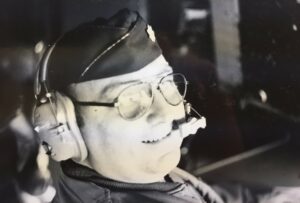 4 – Airlift Operations
4 – Airlift Operations
Colonel Peter J. Hermann is a unique individual. During his tenure in the Air Force Reserve he served in many roles. His service to the Air Force and the nation approached that of a person on full time active duty. He maintained proficiency as a C-141 Navigator – fulfilling the same flight requirements set for active-duty flyers. Summer vacations from his high school guidance counselor duties had him flying worldwide missions out of McGuire AFB. During the Vietnam War he flew cargo and aero medical missions throughout Southeast Asia. He amassed over 5,000 career flying hours and was awarded Master Navigator wings.
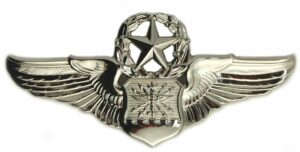
5 – Advisor
Peter utilized his counseling skills to assist many wing personnel resolve difficulties in their family life. One could say that he was an unofficial addition to the Wing’s staff of chaplains. I have observed him in deep conversations with flight and medical crew members as we crossed the North Atlantic. He helped me when my son was diagnosed with schizophrenia, and I struggled to find help. Peter’s counsel provided comfort and understanding for my wife and me as we ventured during very difficult times.
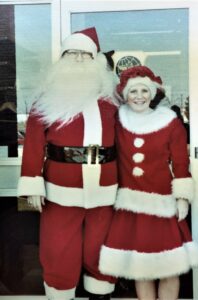 6 – Humanitarian
6 – Humanitarian
His counsel and guidance skill were further utilized in the Wing’s effort to assist at the New Lisbon School for Special Needs Children. Peter worked with the staff, coordinated and participated in the Wing’s management of their annual “Special Olympics.” He played Santa Claus at Christmas– one year arriving in a National Guard helicopter with a flight nurse playing the role of Mrs. Claus. His joviality and large frame made him a most believable Father Christmas!
7 – The Tax Advisor
Every year Peter would conduct an anticipated primer briefing on minimizing federal and state taxation by using the ever changing benefits in the law that favored military personnel. These talks were to standing room only audiences. The word must have reached the IRS, as he soon found himself the target for annual audits.
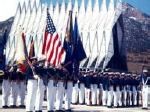 8 – Air Force Academy Liaison Officer/Director
8 – Air Force Academy Liaison Officer/Director
As an additional duty, Peter served as an Air Force Academy Liaison Officer for over 20 years. The Air Liaison Officer Program (ALO) was established when the academy was formed in the late 50’s. It was designed to be the temporary “Alumni Association” of the new academy in Colorado Springs, CO. It has been so successful that it remains an active program today. Peter was an early member. He served the region around his community on Long Island by advising high school students on the merits of an education at the academy. He met his second wife in this role. Her son entered and graduated from the academy. That young man retired as a colonel, after serving as the US Air Attaché in the Philippines. The list of persons influenced by Colonel Hermann now reads as a “Who’s-Who” in industry, academia, and the military. As with most ALO’s, this service was provided at little cost to the government. Other than the few days of paid training they receive at the Academy annually, the bulk of the work was volunteered. Peter became the ALO supervisor for all Long Island before his retirement.
 9 – Homeland Defense Management
9 – Homeland Defense Management
In his final Air Force job, Peter was assigned to the Federal Emergency Management Agency (FEMA) as the Air Force Northeast Director for Disaster Preparedness, a forerunner of today’s Homeland Security. Here he developed plans and procedures to be utilized by states in their responsibilities relating to the support of civilian communities in the event of an attack upon the nation, weather related emergencies or civil disobedience.
****************************************
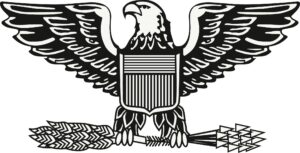 In all these activities, he never lost his boyish sense of humor and dedication to serve the nation without fanfare. The same irreverent disregard for pompous compliance to the demands of the Strategic Air Command he showed as a Lieutenant in 1960 was still there when he wore eagles on his epaulets.
In all these activities, he never lost his boyish sense of humor and dedication to serve the nation without fanfare. The same irreverent disregard for pompous compliance to the demands of the Strategic Air Command he showed as a Lieutenant in 1960 was still there when he wore eagles on his epaulets.
Peter was only interested in helping people to get the job done … proudly serving … possessing the joy of accomplishment … and having fun while doing it.
Postscript:
This essay only addresses Peter’s military accomplishment. A similar article can be written regarding his work in civilian life as an educator, his community involvement, and post-retirement achievements. Additionally, he has been a loving and caring father, and a beloved family treasure. He educated his daughters at Ivy League schools. His son is a graduate of the New York Merchant Marine Academy. Peter was a major factor in his granddaughter reaching the National Finals of the U.S. Figure Skating Championships. Much about Peter has been unstated! All in all … he is quite a guy!! And I am proud to have him as my friend.
RvB
[1] Associate units in the Air Force Reserve flew maintain and fly the same aircraft used by an “associated” active duty squadron. Reservists were required to maintain the same flying proficiency requirements as active duty aircrews.
